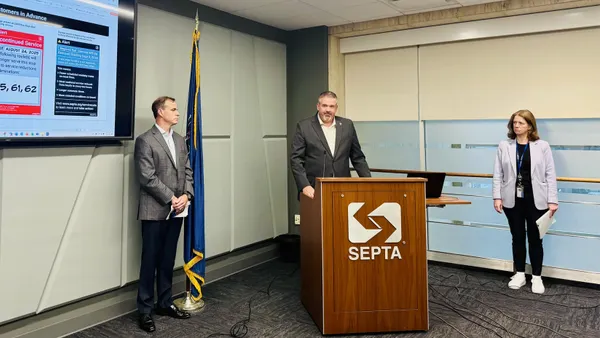How is the largest U.S. state transportation agency planning to use artificial intelligence? When the Texas Department of Transportation announced in December a three-year strategic plan for implementing artificial intelligence across the agency, it had identified 230 potential use cases.
AI “can fundamentally revolutionize what we're doing and create that transformation in the transportation industry,” Anh Selissen, chief information officer at the department, said on a June 2 webinar on its plan hosted by the Eno Center for Transportation.
The 2025-2027 plan sets a road map for the department to integrate advanced analytics and intelligent systems into its operations and transportation system.
Among the possible uses of AI, the department sees the technology as a way to prioritize infrastructure projects, manage budgets and contracts and avoid conflicts with utilities when planning project locations. AI could also provide decision support for emergencies, such as through weather monitoring, identifying the best evacuation routes and alerting and responding to roadway incidents and wrong-way drivers.
The department also envisions a role for AI in workforce training and managing its vehicle fleet. “Our next step [in the process] will be bringing in a large amount of the traffic data so we can actually do some stronger AI analytics around traffic and congestion information from a stakeholder experience,” Selissen said.
So far, the department is using AI in 22 aspects of its work, said Darran Anderson, the department’s director of strategy and innovation, including for real-time and predictive traffic data analysis and crash detection. Layering AI on top of the department’s highway camera network is reducing incidence response time for emergencies or roadside assistance, he said.
Selissen said the department sees “millions of attacks” daily into its computer systems, making cybersecurity essential for any AI implementation. “If a hacker gets into this system and basically permeates your network, it is going to be a world of hurt for your organization,” she said. The department’s strategy, as laid out in its three-year plan, includes educating staff of the risks and ensuring AI systems are designed, tested and deployed in ways that ensure security.
The department’s guidelines include privacy protections along with checks and balances to ensure results are unbiased and provide equity across all users. Selissen said about AI, “You've got to learn it. You’ve got to figure out its capacity for use, and you’ve got to understand the boundaries of what that use should be.” She recommended trying pilot programs and starting with small tasks.











